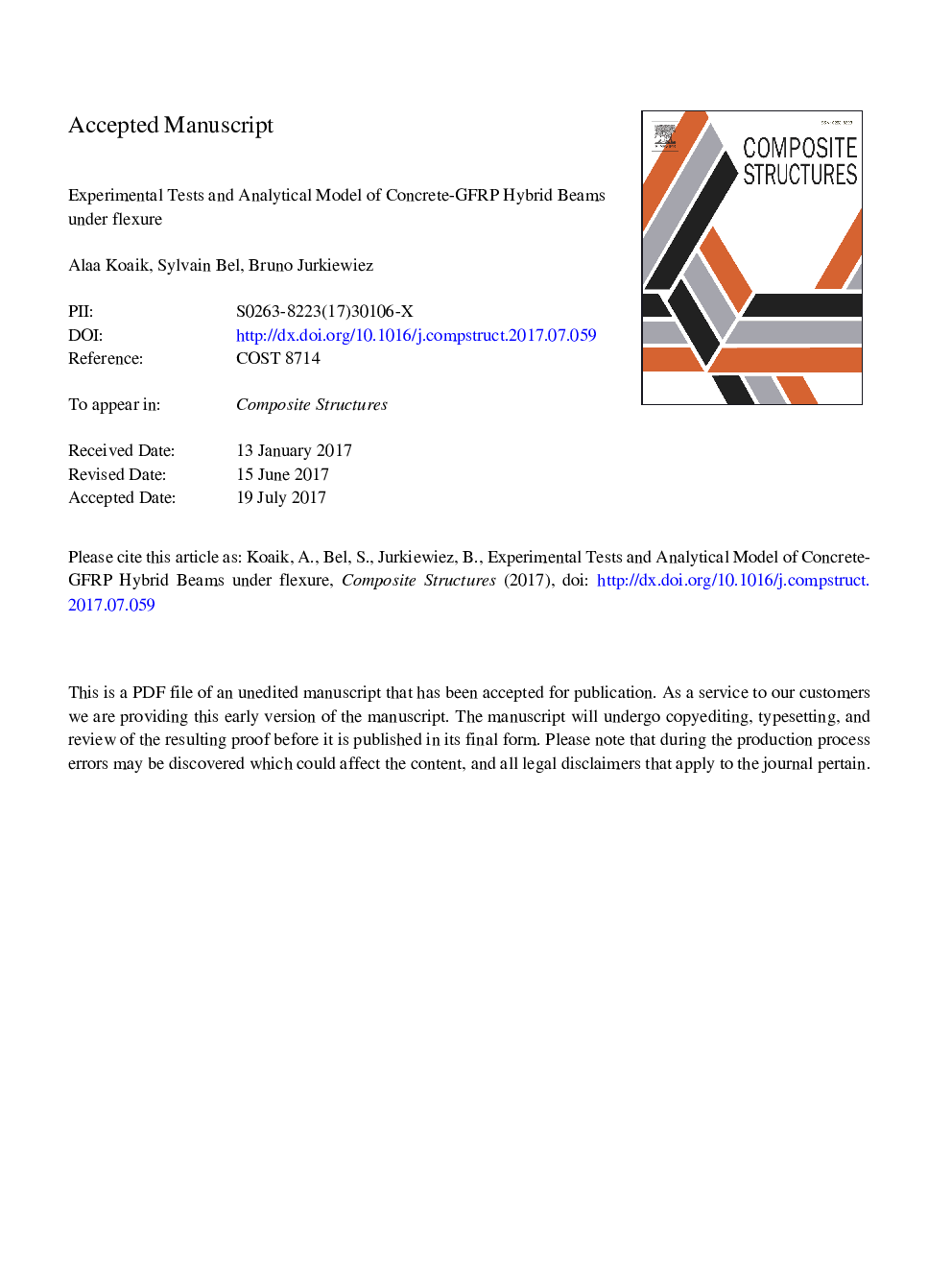| Article ID | Journal | Published Year | Pages | File Type |
|---|---|---|---|---|
| 4917635 | Composite Structures | 2017 | 51 Pages |
Abstract
Recently, the use of GFRP pultruded profiles increased in the structures domain especially in the construction of sandwiched slabs and footbridges. However under heavy loads, the risk of using these profiles increases due to their high deformability and instability as a result of their weak stiffness and orthotropic nature. A solution proposes the assembly of these profiles with concrete slabs to create stiffer hybrid elements. The connection of these two elements is established either by steel studs (bolting) or bonding technique. These two techniques have their advantages and disadvantages regarding the mechanical behavior and in-situ implementation. This paper presents experimental results of interface characterization and bending behavior of six hybrid beams, designed and constructed using both connection techniques. Analytical methods are also developed to analyze the behavior of these structures. Comparisons between theory and measurements show acceptable differences mainly due to the sensitivity of the GFRP moduli and the non-linearity of concrete elements.
Related Topics
Physical Sciences and Engineering
Engineering
Civil and Structural Engineering
Authors
Alaa Koaik, Sylvain Bel, Bruno Jurkiewiez,
